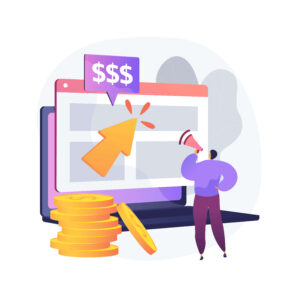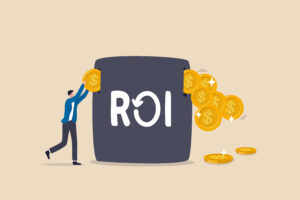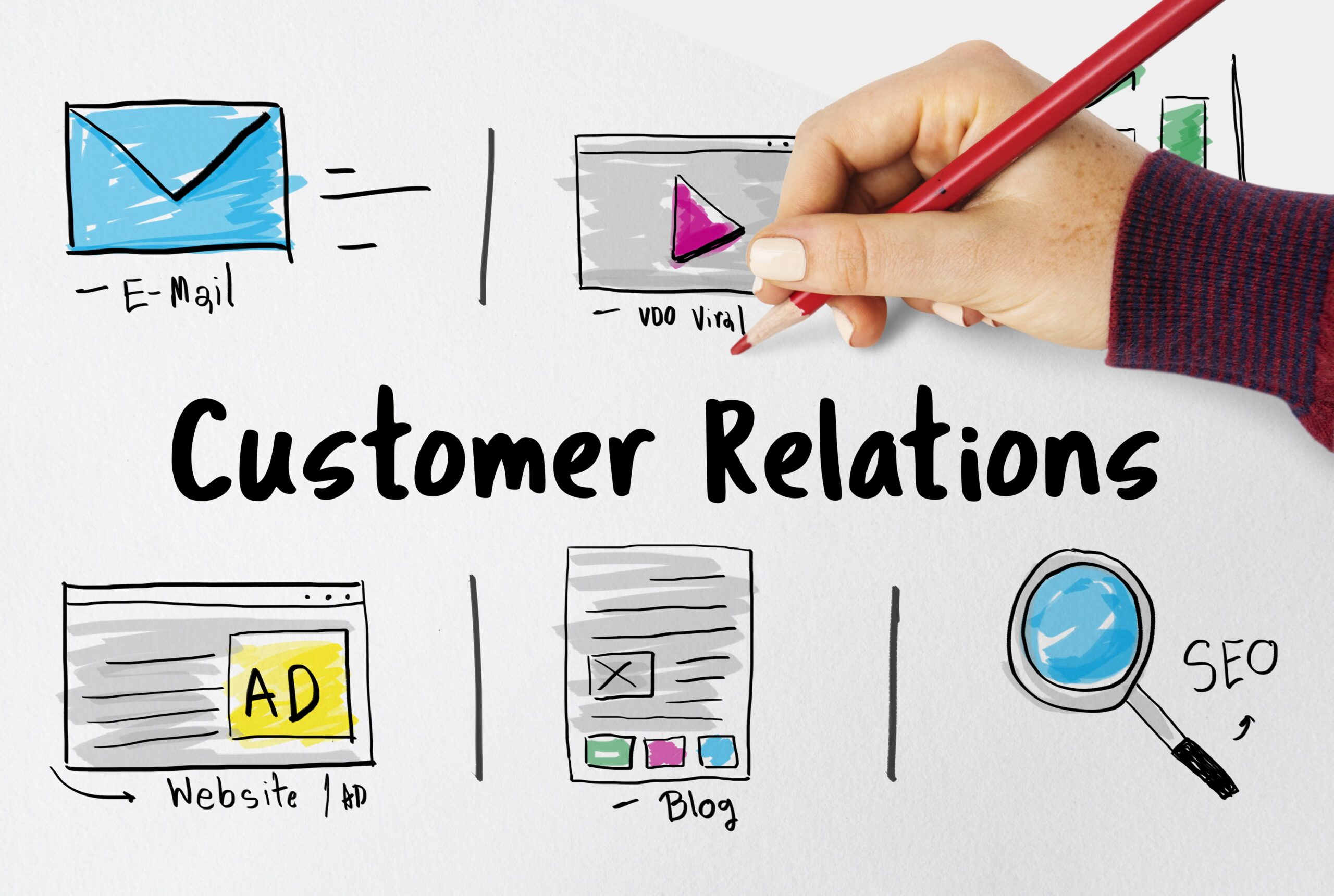Understanding Email Marketing CPM: Boost Your Campaign ROI
For those who are involved in email marketing CPM, it is essential to comprehend the elements that have an impact on expenses and return on investment. In this comprehensive guide, we will explore various aspects of email marketing CPM, from pricing models to strategies for maximizing ROI.
We’ll delve into the different pricing models available in email marketing campaigns and compare them with other online advertising methods. Additionally, we will discuss how platform selection can affect your overall campaign costs and why open rate and click-through rate metrics are essential in determining your success.
As you read further, learn about negotiating tiered CPM rates with Email Service Providers (ESPs) and alternative pricing models such as contact database size-based or flat fee subscription plans. We’ll also cover leveraging social media platforms like Facebook’s vCPM targeting feature for better results while analyzing YouTube performance through Google Analytics.
Last but not least, we will touch upon monitoring key metrics in email marketing CPM campaigns to ensure inbox delivery over send quantity – ultimately helping you maximize your return on investment.
Table of Contents:
- Understanding Email Marketing CPM
- How Email Marketing CPM Works
- Comparing CPM with Other Online Advertising Methods
- Factors Affecting Profit Margins in Email Marketing
- Negotiating Tiered Rates with ESPs
- Alternative Pricing Models in Email Marketing
- Utilizing Social Media Targeting Tools
- Monitoring Metrics and Maximizing ROI
- FAQs in Relation to Email Marketing Cpm
- Conclusion
Understanding Email Marketing CPM
Email Marketing CPM (Cost Per Thousand Impressions) is a pricing model used for email sponsorships and advertising opportunities, allowing businesses to reach large audiences at relatively low costs. It’s an effective alternative to online display advertising, ideal for testing offers before launching large-scale ad campaigns.
How Email Marketing CPM Works
In the world of email marketing, advertisers pay a fixed price per thousand email messages sent out by their chosen email service providers (ESPs). This means that if you’re paying $10 as your CPM rate and sending 10,000 emails, your total cost would be $100. The key advantage of this approach is its scalability – you can easily increase or decrease your budget based on the size of your targeted audience.
Comparing CPM with Other Online Advertising Methods
- Direct Mail: Unlike traditional direct mail campaigns where printing and postage costs can add up quickly, email marketing allows for more cost-effective outreach efforts without sacrificing reach or impact.
- Online Display Advertising: While banner ads are often priced using similar metrics like impressions or clicks, they tend to have lower click-through rates compared to well-targeted email newsletters due to ad fatigue among users.
- Social Media Advertising: Although platforms like Facebook offer advanced targeting options for marketers looking to promote their content through sponsored posts or ads in newsfeeds; these channels typically come with higher average CPMS than those found in dedicated email list promotions.
By understanding how email marketing CPM works and comparing it with other online advertising methods, businesses can make informed decisions about the best channels to invest in for their specific goals. Email campaigns are often a cost-efficient means of reaching out to sizable groups, with the added benefit of controlling expenditure and communication.
By understanding email marketing CPM, marketers and small business owners can make better decisions when it comes to budgeting for their online advertising campaigns. Let’s now explore how elements like open rate and click-through rate can impact the profitability of an email marketing effort.
Key Takeaway:
Email Marketing CPM is a pricing model used for email sponsorships and advertising opportunities, allowing businesses to reach large audiences at relatively low costs. Advertisers pay a fixed price per thousand email messages sent out by their chosen email service providers (ESPs), making it scalable based on the size of the targeted audience. Compared to other online advertising methods like direct mail, online display advertising, and social media advertising; email marketing campaigns offer a cost-effective way to reach large audiences while maintaining control over budget and messaging.

Factors Affecting Profit Margins in Email Marketing
Email marketing campaigns using the CPM model can be influenced by various factors that impact profit margins. These include open rates, click-through rates (CTR), eCPM calculations, and inbox delivery charges. By understanding these metrics, marketers can determine how much value they get from their budget while maximizing return on investment.
Importance of Open Rate and Click-Through Rate
Open rate is a crucial metric for email marketing success as it indicates the percentage of recipients who opened an email campaign. The higher the open rate, the more likely subscribers are to engage with your content. CTR evaluates the proportion of recipients who clicked on hyperlinks within an email message in comparison to those who only read it. Both metrics help assess audience engagement levels and contribute significantly to overall profitability.
Calculating eCPM for Better Decision-Making
eCPM stands for effective cost per thousand impressions and is calculated by dividing total earnings by total impressions served then multiplying by 1000 (eCPM = Earnings / Impressions x 1000). This metric allows marketers to compare different ad campaigns’ performance based on revenue generated per thousand views rather than just focusing on raw CPM numbers alone. Understanding eCPM helps businesses make informed decisions about which advertising strategies yield better results while optimizing budgets accordingly.
Incorporating Deliverability Services into Your Strategy
- Bounce Management: Partnering with ESPs offering bounce management services can help improve deliverability rates by identifying and removing invalid email addresses from your list.
- Inbox Delivery Charges: Some ESPs charge based on inbox delivery, meaning you only pay for emails that reach recipients’ inboxes. This pricing model encourages better targeting and ensures higher open rates, ultimately contributing to increased profitability.
Taking these factors into account when planning an email marketing campaign will allow businesses to maximize their ROI while ensuring a successful CPM-based strategy.
Gaining knowledge of the variables that can have an impact on your email marketing profit margins is crucial for making informed decisions and achieving maximum profitability. Negotiating tiered rates with ESPs is a great way to reduce costs while still providing quality service for customers.

Negotiating Tiered Rates with ESPs
Email marketing CPM campaigns can be more cost-effective when marketers negotiate tiered rates with email service providers (ESPs). This approach involves estimating the number of emails sent per year and billing either monthly or per campaign basis, allowing businesses to save on costs while still reaching their desired audience.
Benefits of Tiered Pricing Models
- Budget-friendly: By negotiating a tiered pricing model, small businesses can reduce their overall email marketing expenses as they pay only for the volume of emails sent. This is particularly beneficial for those who have fluctuating email volumes throughout the year.
- Scalability: As your business grows and your email list expands, having a tiered pricing structure allows you to scale up without incurring exorbitant costs associated with flat-rate plans that charge based on database size.
- Incentive for better performance: With a tier-based system, ESPs are incentivized to provide high-quality services such as improved deliverability rates and bounce management since their revenue depends on successful delivery and engagement from subscribers.
Strategies for Negotiating Lower Rates
- Analyze past data: Review historical data from previous campaigns to determine average open rates, click-through rates (CTR), and conversion metrics. Use this information as leverage during negotiations by demonstrating how well-targeted your audience is and how effective your campaigns have been in generating results.
- Demonstrate loyalty: Showcase long-term commitment to the ESP by highlighting your history of using their services and expressing interest in continuing to work with them. This may encourage the provider to offer discounted rates for long-term clients.
- Compare competitors: Research competing ESPs’ pricing structures and be prepared to discuss how they compare during negotiations. By demonstrating knowledge of market rates, you’ll be better equipped to secure a competitive deal from your preferred provider.
In summary, negotiating tiered CPM rates with email service providers can lead to significant cost savings while still allowing businesses to reach large audiences through email marketing campaigns. By understanding the benefits of this pricing model and employing effective negotiation strategies, marketers can maximize their return on investment in email marketing CPM efforts.
Negotiating tiered rates with ESPs can help you get the most out of your email marketing budget. Exploring other cost structures for email marketing can provide a wider range of choices, so it’s essential to factor them into decisions regarding the budget.
Key Takeaway:
Negotiating tiered rates with ESPs can make email marketing CPM campaigns more cost-effective. This approach allows businesses to save on costs while still reaching their desired audience, and by analyzing past data, demonstrating loyalty, and comparing competitors during negotiations, marketers can maximize their return on investment in email marketing efforts.

Alternative Pricing Models in Email Marketing
Apart from traditional Email Service Providers’ (ESPs) pricing structures like license fees or hourly consultancy rates, some companies opt for alternative methods such as basing costs on contact database size instead of emails sent or adopting flat fee subscription-based plans tailored specifically towards individual needs. These options can provide more flexibility and better align with the unique requirements of different businesses.
Cost Based on Contact Database Size
Some ESPs offer pricing models that focus on the size of your contact list rather than the number of emails you send. This approach allows small businesses to manage their email marketing campaigns without worrying about exceeding a specific sending limit. Additionally, it encourages marketers to maintain clean and updated email lists, which can improve deliverability services and bounce management.
Flat Fee Subscription-Based Plans
- Tailored Packages: Flat fee subscription plans are designed to cater to various business sizes and needs. Whether you’re a small business owner sending 10 thousand email messages per month or an enterprise-level company managing millions of subscribers, there’s likely a package available that suits your requirements.
- Predictable Costs: One significant advantage of this pricing model is its predictability – allowing marketers to budget effectively for their email marketing campaigns without worrying about fluctuating CPM rates or additional charges related to ad campaigns.
- Inclusive Features: Most flat fee subscriptions include essential features like automation tools, analytics reports, and integrations with other online advertising platforms at no extra cost – ensuring seamless integration between all aspects of your digital marketing strategy.
When selecting an ESP, it’s important to identify the pricing model that is most suitable for your business objectives and budget. By exploring alternative options like contact database size-based costs or flat fee subscriptions, you can find a solution that maximizes your email marketing ROI while minimizing expenses.
Email marketing campaigns can be made more cost effective by exploring alternative pricing models such as basing the costs on contact database size or opting for a flat fee subscription-based plan. Social media targeting tools offer even further potential to maximize efficiency and reach, making it an essential part of any email marketing strategy.
Key Takeaway:
Email marketing has alternative pricing models, such as cost based on contact database size or flat fee subscription-based plans. These options provide more flexibility and predictability for marketers to budget effectively while maximizing their email marketing ROI.

Utilizing Social Media Targeting Tools
Social media channels offer various tools that make it easier to define an ideal audience when targeting demographics through email marketing campaigns. By leveraging these platforms, marketers can optimize their email marketing CPM efforts and reach the right people at the right time.
Facebook vCPM for Email Marketing Campaigns
Facebook Ads Manager allows businesses to establish their average cost-per-thousand viewable impressions (vCPM) by setting up ad campaigns with specific objectives such as increasing brand awareness or driving website traffic. By leveraging the average cost-per-thousand viewable impressions (vCPM) information, marketers can identify how much they should invest in their email marketing campaigns through Facebook Ads Manager. Additionally, Facebook’s advanced targeting options enable businesses to narrow down their audience based on factors like age, location, interests, and behaviors.
Leveraging Google Analytics for YouTube Ad Targeting
YouTubers looking to boost their email list can use Google Analytics in conjunction with YouTube advertising. This powerful tool enables content creators to identify which videos generate the most revenue and engagement from viewers. With this data in hand, they can create targeted ad campaigns promoting those high-performing videos alongside a compelling call-to-action encouraging viewers to sign up for an email newsletter.
- Email Marketing: Promote your products or services via targeted emails sent directly into potential customers’ inboxes.
- Email CPMS: The cost per thousand impressions is a pricing model used by advertisers who want to reach a large audience at a relatively low cost.
- Email Newsletters: Regularly send informative and engaging content to your subscribers, keeping them informed about your business and nurturing customer relationships.
By combining the power of social media targeting tools with effective email marketing strategies, businesses can maximize their ROI on CPM campaigns. It’s essential to monitor performance metrics such as open rates and click-through rates closely while continually optimizing ad creatives and subject lines for better results.
By utilizing social media targeting tools, you can effectively target your desired audience and maximize the ROI of your email marketing campaigns. Tracking delivery and click-through stats can be beneficial in making informed decisions to improve the success of your campaigns.
Key Takeaway:
Social media targeting tools can help define an ideal audience for email marketing campaigns, optimizing CPM efforts. Facebook’s vCPM and advanced targeting options enable businesses to narrow down their audience based on factors like age, location, interests, and behaviors while leveraging Google Analytics with YouTube advertising helps content creators identify high-performing videos to promote alongside a compelling call-to-action encouraging viewers to sign up for an email newsletter.

Monitoring Metrics and Maximizing ROI
Email Marketing CPM campaigns require paying for ad views rather than clicks or conversions, making it essential to monitor metrics like open rates and click-through rates closely. By carefully selecting partners who charge based on inbox delivery and utilizing social media targeting tools effectively, businesses can maximize their return on investment in Email Marketing CPM campaigns.
Importance of Monitoring Campaign Performance
To ensure your email marketing campaign’s success, close monitoring of KPIs such as open rate, click-through rate (CTR), bounce rate and unsubscribe rate is essential. These KPIs provide valuable insights into how well your campaign is performing and whether adjustments are needed to improve results. For instance, low open rates may indicate that your subject lines need improvement or that you should segment your email list more effectively.
Selecting the Right ESPs Based on Inbox Delivery Charges
- Bounce Management: Choose an ESP with robust bounce management features to help maintain high deliverability rates by automatically removing invalid addresses from your mailing list.
- Deliverability Services: Some ESPs offer additional services like IP reputation monitoring and authentication setup assistance which can significantly impact inbox placement rates positively.
- Pricing Model: Consider opting for an ESP that charges based on actual delivered emails instead of sent emails; this ensures you only pay for successful deliveries while reducing costs associated with bounces or spam complaints.
In addition to these factors, be sure to compare different providers’ pricing models before committing. You might find some ESPs offer tiered pricing or alternative plans based on contact database size, which can help you find the best fit for your business needs and budget.
By diligently monitoring campaign performance metrics and selecting an ESP that charges based on inbox delivery, you can optimize your Email Marketing CPM campaigns to achieve maximum ROI. Don’t forget to leverage social media targeting tools like Facebook vCPM and Google Analytics for YouTube ad targeting to further refine your audience reach and improve overall results.
Key Takeaway:
To maximize ROI in Email Marketing CPM campaigns, it’s crucial to monitor metrics like open rates and click-through rates closely. Choosing the right ESPs based on inbox delivery charges, bounce management, and deliverability services can significantly impact campaign performance. Additionally, leveraging social media targeting tools like Facebook vCPM and Google Analytics for YouTube ad targeting can further refine audience reach.
FAQs in Relation to Email Marketing Cpm
What is the average CPM for email marketing?
The average CPM (cost per thousand) for email marketing ranges from $5 to $15, depending on factors such as industry, audience targeting, and ESP (Email Service Provider). However, these rates can vary significantly based on your specific campaign goals and requirements. To optimize your budget, it’s essential to negotiate tiered pricing with your ESP.
What is the formula for CPM in email marketing?
In email marketing, the formula for calculating CPM is: (Total Campaign Cost / Total Number of Emails Sent) x 1,000. This calculation helps you determine how much it costs to send 1,000 emails through a particular campaign or service provider. Monitoring this metric allows marketers to evaluate their return on investment effectively.
What is a good CPC for email marketing?
A good CPC (Cost Per Click) in email marketing varies by industry but typically falls between $0.50 and $2.00 per click. A lower CPC indicates better performance since it means that fewer advertising dollars are spent per engagement with potential customers. Factors like targeted audience demographics and ad quality also impact overall CPC values.
What is a typical CPM for a newsletter?
The typical CPM rate for newsletters depends on various factors such as target audience size and content type but generally falls within the range of $10 – $30 per thousand subscribers sent an issue. It’s important to note that high-quality content tailored specifically towards your subscriber base will likely yield higher open rates and click-throughs resulting in more cost-effective campaigns.
Conclusion
Understanding email marketing CPM is essential for marketers and small business owners looking to maximize their advertising budget. By comparing CPM to other online advertising methods, businesses can determine if email marketing is the right choice for them.
Several factors affect email marketing CPM rates, including platform or email list selection, open rates, click-through rates, and eCPM calculation. Negotiating tiered CPM rates with ESPs can also help businesses save money on their campaigns while ensuring inbox delivery over sends alone.
If you’re looking to make use of email marketing for your organization, DirectIQ provides a straightforward interface that makes it easy to craft successful campaigns at an economical cost. Sign up today to take advantage of our powerful email marketing tools!












